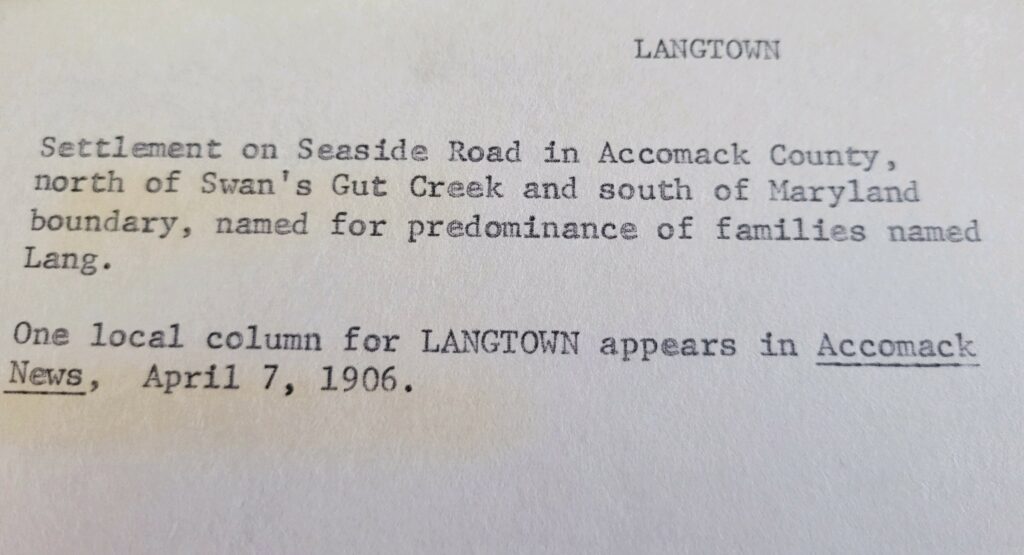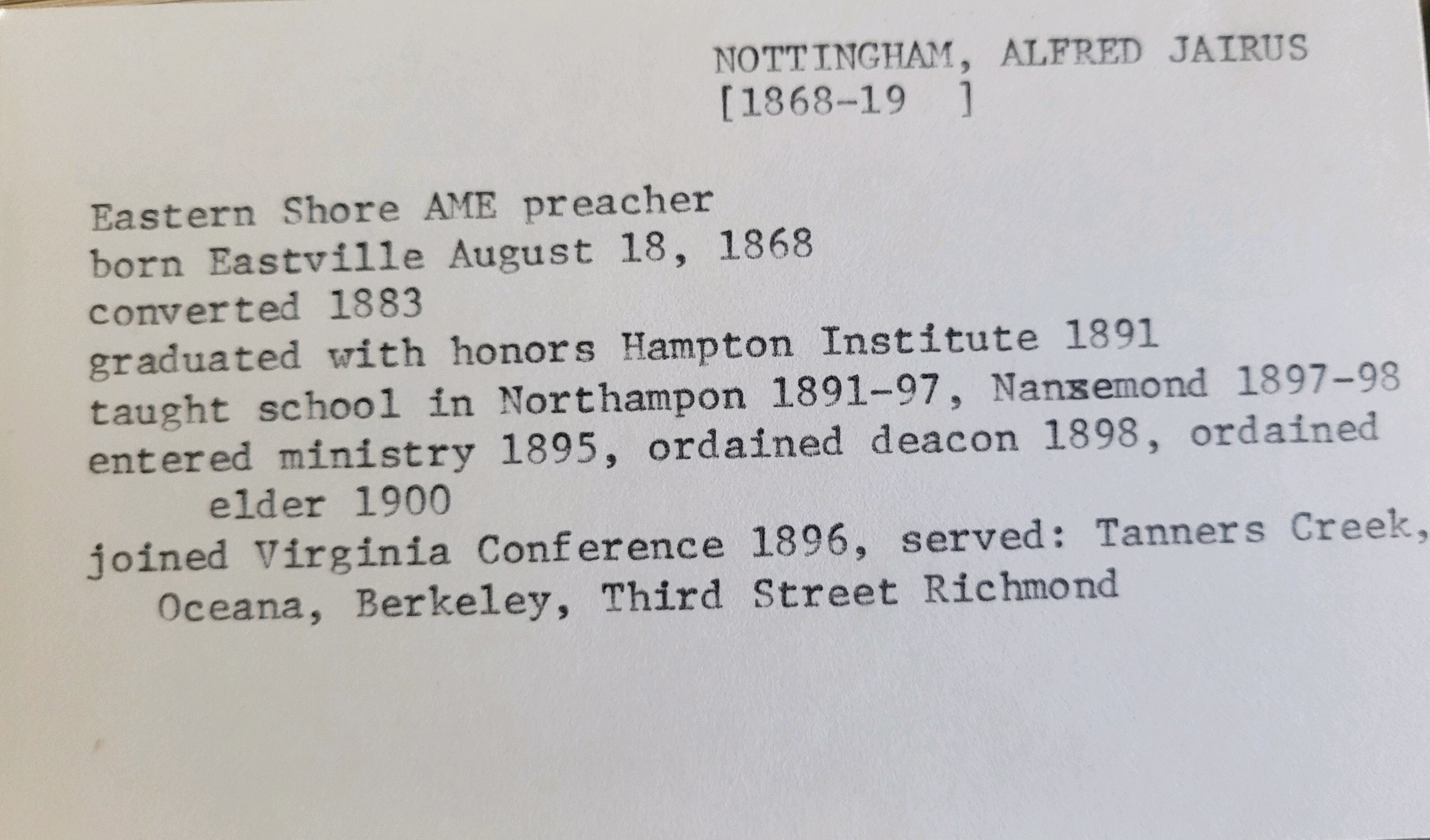What does Tom Clancy’s famous novel The Hunt For Red October have to do with to the Eastern Shore of Virginia?
Even if one might remember that there is in fact a passing mention of the Shore in its pages, it is highly unlikely that one could pinpoint the page of the 1984 edition that a character speaks about hunting geese on the ESVA. But Kirk Mariner could. Not from memory, perhaps, but with a quick consultation of his personal card catalog he would have known that it was on page 118.
Part of the Kirk Mariner collection bequeathed to Eastern Shore Public Library, that card catalog serves as the inventory to his personal library of over 2,000 books, journals, and in some cases, files. The cards also collect newspaper clippings and bits of other information that he thought might be useful in his writing and research.
Where was Langtown and where might one find information on it?

Seaside Road in Accomack County north of Swan’s Gut Creek, and check the Accomac News, April 7, 1906 edition for a local column.
Who was Alfred Jairus Nottingham?
An Eastern Shore AME preacher born in Eastville, August 18, 1868.
Where might one find a mid-nineteenth century travelogue of the ESVA?
Try Charles Lanman’s Haw-Ho-Noo, located under “Lanman” in Mariner’s files.
The catalog is the product of its creator, and so not without bias. To Mariner, a Methodist minister born in northern Accomack County, the Methodism and New Church (& vicinity) sections are particularly voluminous, with the New Church area broken into decades and Methodism taking up almost one whole drawer. As Heritage Center staff continue to work through the collection, integrate volumes into the Eastern Shore Room’s existing reading room collection, the catalog has been instrumental in explaining a book’s seemingly mysterious presence in the Mariner collection. Knowing that there must be a connection to the Eastern Shore or it wouldn’t have been included, but the connection not always being immediately obvious (see Tom Clancy above) a quick check of the card catalog reveals the answer. Unfortunately no key was left to Mariner’s notations, but staff have mostly cracked the code. An “X” means the volume is in the collection. The absence of an “X” means it is held in another repository, sometimes named. An “X” with an asterisk means the text is in the files, not on the shelves. Books and articles are listed by author and often cross referenced by subject heading and newspaper clippings are classified by subject, location or personal name depending on the point of interest. The wealth of information contained in Kirk Mariner’s card catalog extends far beyond serving as an index to his personal collection – a gift in itself. It serves as an index to the entire Eastern Shore.

